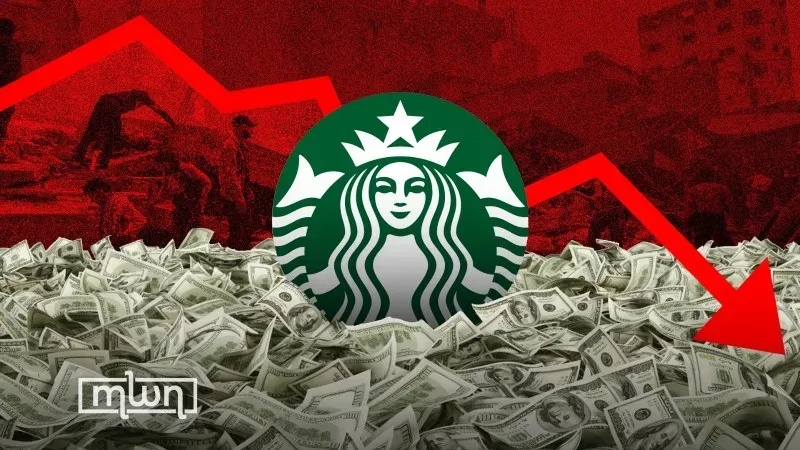Starbucks sales decline marks a crucial phase for the coffee giant as it navigates its sixth consecutive quarter of lower same-store sales. In light of the latest Starbucks earnings report, which revealed a decrease in transactions amidst rising average transaction values, CEO Brian Niccol emphasizes that the company’s turnaround strategy is on track, drawing from his experience with past retail recovery efforts. Despite these challenges, Starbucks’ North America performance has shown resilience, with same-store sales falling less than expected. The company’s recent initiatives, including the rollout of the new “Green Apron Service,” aim to enhance customer engagement and revitalize in-store experiences. As Starbucks continues to evolve, all eyes are on how these strategies will impact future sales and their commitment to regaining consumer trust.
The recent downturn in Starbucks’ performance signals a need for revitalization within one of the world’s most recognizable coffee brands. As the company grapples with persistent challenges in its sales figures, it looks to alternative strategies to boost engagement and restore its market presence. This adjustment follows an extensive earnings analysis where the emphasis is placed on customer experiences and innovation in product offerings. The focus on improving North American sales, alongside a broader plan targeting international markets, showcases their commitment to adapt and thrive amidst a competitive landscape. With CEO Brian Niccol at the helm, Starbucks is poised to implement transformative strategies that could redefine its approach to engaging with coffee enthusiasts and casual customers alike.
Starbucks Sales Decline: Addressing the Challenge
Starbucks is experiencing a notable decline in same-store sales for the sixth consecutive quarter, a trend that has raised concerns among investors and analysts. The recent earnings report highlighted a 2% drop globally in same-store sales, exceeding expectations of a 1.3% decline. CEO Brian Niccol recognizes the gravity of this challenge, maintaining that the company is on an accelerated path to recovery through strategic initiatives aimed at rectifying the financial downturn.
In response to the declining sales figures, Starbucks is implementing a robust turnaround strategy that focuses on enhancing customer engagement and strengthening its brand connection. As transactions fell by 3%, the rise in average transaction value underscores a shift in consumer behavior, suggesting that while foot traffic may be decreasing, committed customers are spending more. This duality presents both a challenge and an opportunity for Starbucks as it seeks to reignite interest among its broader customer base.
Starbucks’ North America performance has been critical in chipping away at the total sales decline. The company reported that North American same-store sales only experienced a 2% drop, better than the anticipated 2.5%. Niccol’s emphasis on enhancing the customer experience indicates a commitment to addressing the specific needs of the U.S. market while balancing operational efficiencies with customer satisfaction.
Despite the ongoing struggles within the U.S. market, the outlook for Starbucks is cautiously optimistic. Executives have noted improvements in several key metrics, including partner engagement and customer connection scores. These indicators point towards a gradual recovery as the company leans into its strengths, integrating feedback from baristas and customers in its turnaround strategy.
Starbucks Turnaround Strategy: Focus on Hospitality and Engagement
To combat the ongoing decline in sales, Starbucks’ new turnaround strategy focuses heavily on enhancing hospitality, notably through its ‘Green Apron Service’ program. This initiative is designed to prioritize customer engagement, ensuring that every customer interaction is meaningful and increases overall satisfaction. The strategy has shown promising results in tests, prompting Starbucks to escalate its rollout, indicating a shift from purely transactional service towards building deeper connections with customers.
Moreover, Starbucks is reevaluating its store concepts by reducing the number of new locations built, instead opting to enhance existing cafes. This approach reflects a commitment to creating an inviting atmosphere conducive to community engagement, which is vital in reversing the sales decline. Niccol’s plan to restore previously removed seating illustrates a deeper understanding of customer preferences, with many patrons valuing an inviting space to relax and engage with the brand.
In conjunction with improving customer interactions, Starbucks is also placing significant emphasis on skill enhancement among its baristas. The success of the ‘Green Apron Service’ hinges on well-trained staff who can deliver exceptional service consistently. Thus, a $500 million investment in labor is planned, marking a clear focus on training and development as critical components of their recovery strategy and a fundamental driver in raising sales figures.
As investments flow into boosting customer service, Starbucks aims to rebound from its recent struggles. The ongoing training initiatives not only focus on improving interpersonal skills but also equip baristas with deeper product knowledge, enhancing the overall customer experience. This layered strategy signifies Starbucks’ commitment to not just combating sales decline but also to nurturing a loyal customer base poised for growth.
Evaluating Starbucks North America Performance Amid Challenges
Starbucks’ North American performance is undergoing scrutiny as the company grapples with declining same-store sales. The earnings report indicates that North American same-store sales fell by 2%, a smaller drop than predicted, suggesting a level of resilience in the market. This relative strength points to potential areas for growth, as Starbucks continues to refine its customer offerings and enhance operational efficiencies.
In light of these challenges, Starbucks is focusing on strategic innovations and engaging more effectively with its customer base in North America. The rise in average transaction value by 1% suggests that while the number of transactions has declined, loyal customers are more willing to spend when they do visit. This dynamic emphasizes the importance of understanding consumer behavior amidst broader economic pressures and the competitive landscape.
Additionally, the company is tapping into the successful performance of its licensed stores on college campuses, where same-store sales have reportedly increased. This shift illustrates the younger demographic’s response to targeted strategies and promotions designed to strengthen brand loyalty among emerging consumers. By leveraging localized offerings, Starbucks can galvanize sales while reinforcing its position in the market.
Ultimately, Starbucks’ ability to bounce back rests heavily on how well it can adapt its offerings and maintain engagement with its North American customer base. With promising signs emerging from college campuses and a growing understanding of customer preferences, the path forward appears hopeful, contingent upon sustained focus on service quality and innovative offerings.
Consumer Behavior Trends Affecting Starbucks Sales
The current trends in consumer behavior are crucial for understanding Starbucks’ sales decline. Many consumers are gravitating towards value for money, leading to increased competition in the coffee market, particularly in light of Starbucks’ pricing strategies. The increase in average transaction value indicates that while customers may not frequent stores as often, those who do are willing to invest more during their visits, emphasizing the importance of optimizing menu offerings.
Starbucks’ efforts to reconnect with younger consumers have also begun to show encouraging signs. The company’s decision to lower prices in competitive markets such as China demonstrates a strategic pivot aimed at aligning with consumer expectations. By actively monitoring market dynamics and adjusting pricing structures, Starbucks can better position itself within the fiercely competitive coffee sector, ultimately affecting its same-store sales both domestically and internationally.
Furthermore, the engagement efforts aimed at increasing customer satisfaction are reflected in the statistics regarding transactions and customer satisfaction scores. While a decline in foot traffic is evident, the company’s strategic initiatives toward enhancing the in-store experience play a vital role in shaping positive consumer perceptions, which can foster loyalty and revitalize sales.
As Starbucks endeavors to navigate the evolving landscape of consumer preferences, a strong emphasis on adaptability will be paramount. Harnessing insights from customer feedback and market trends will equip Starbucks to not only improve its current standing but to also anticipate future shifts in customer behavior.
Future Prospects: Innovations and Strategic Investments at Starbucks
Looking ahead, Starbucks has ambitious plans that aim to steer the company towards recovery and growth. With a multitude of innovative products set to launch, including protein cold foam and coconut-water-based drinks, Starbucks is positioned to capture the interest of both loyal and new customers. The introduction of a refreshed rewards program and a new Starbucks app will complement these products, reflecting a strategic focus on enhancing customer experience through technology.
Additionally, the commitment to invest $500 million in labor over the next year echoes the company’s dedication to quality service and short-term recovery. With the rollout of the ‘Green Apron Service’ emphasizing customer interactions, Starbucks is looking to create a holistic experience that extends beyond the coffee itself, appealing to customers’ desire for connection and engagement.
As the company prepares for the fiscal 2026 landscape, the potential investor day will serve as a platform to share these transformative initiatives with key stakeholders. By outlining a clear vision for the future, Starbucks can foster investor confidence and ensure financial backing for its ambitious plans.
The upcoming fiscal year, coupled with strategic insights derived over recent quarters, will be critical for Starbucks as it seeks to regain its footing in a highly competitive market. Through innovation, customer engagement, and a commitment to quality, Starbucks aims to not only halt the trend of declining sales but to set the stage for long-term growth.
Impact of Competitive Forces on Starbucks Performance
Starbucks faces significant pressure from heightened competition in the coffee market, notably from lower-priced rivals such as Luckin Coffee. This competitive landscape has prompted the company to reconsider its pricing strategies, particularly in key markets like China, where Starbucks has lowered drink prices. Such measures are crucial for maintaining market share amid shifting consumer preferences and economic challenges.
In response to this competitive pressure, Starbucks is not only focusing on pricing but also on enhancing the overall customer experience. The introduction of innovative service initiatives like the ‘Green Apron Service’ highlights the company’s efforts to stand out through superior engagement rather than just through price. By fostering loyalty among its customer base, Starbucks can mitigate the impact of competition and drive sales.
Additionally, Starbucks is closely monitoring competitive trends in both retail and online spaces to inform its strategic decisions. By analyzing how rival brands are positioning themselves in the market, Starbucks can adapt its offerings and marketing strategies accordingly, ensuring that it remains relevant and appealing to consumers across demographics.
Ultimately, recognizing and responding to competitive forces will be a critical aspect of Starbucks’ turnaround strategy as it seeks to reverse its sales decline. Through strategic innovation and customer-centric approaches, Starbucks can enhance its market position and offer compelling reasons for customers to return.
Starbucks Financial Performance Overview: Earnings and Forecasts
Starbucks’ financial performance remains a focal point as the company navigates through its recent sales challenges, evident in the latest earnings report. The report revealed a notable drop in net income per share from 93 cents to 49 cents year-on-year, an indication of the serious nature of the current situation. Despite this, revenue has seen a slight uptick, with total sales reaching $9.5 billion, which exceeds expectations, highlighting potential recovery avenues.
Close examination of these financial figures shows how vital Starbucks must be in managing costs while driving sales growth. The $558.3 million net income attributed to the company illustrates the need for effective cost management in the face of declining same-store sales globally. As Starbucks approaches fiscal 2026, improving financial health will require a strategic balance of cost reductions and revenue enhancements.
Looking forward, the conservative approach emphasized by CFO Cathy Smith reflects a cautious optimism amid uncertainty in consumer behavior and broader economic conditions. Preparing for fluctuations in sales speaks to the company’s resilience in managing potential downturns while simultaneously investing in growth initiatives.
As Starbucks continues to refine its strategies in light of the current performance overview, stakeholders will be keenly observing how these efforts translate into tangible results in the coming quarters. With careful financial stewardship and a commitment to innovation, Starbucks has the potential to improve its financial outlook and steadily move past its current sales challenges.
Starbucks Response to Market Dynamics
Starbucks’ response to shifting market dynamics is critical in understanding its ongoing sales performance. Faced with declining same-store sales, the company has pivoted towards reinforcing brand engagement through community-driven initiatives, ultimately aiming to reconnect with its customer base. Understanding market trends has also led Starbucks to reduce drink prices in certain regions, showcasing adaptability in a competitive landscape.
The company’s proactive approach in addressing shifts in consumer behavior and preferences acknowledges the challenges posed by economic fluctuations. By prioritizing customer experience improvements alongside pricing modifications, Starbucks demonstrates an understanding of the need for a dynamic strategy that resonates with current consumer expectations.
Strategically, Starbucks has also concentrated on improving operational efficiencies, which is essential for sustaining its competitive edge. This includes streamlining inventory management and enhancing service delivery through innovations like the ‘Green Apron Service,’ aimed at providing a more personalized experience for customers.
Through careful navigation of market dynamics and an adaptive business strategy, Starbucks is positioned to respond effectively to the challenges it faces. By harmonizing product offerings with customer engagement initiatives, the company can secure its foothold in a rapidly evolving market landscape.
Frequently Asked Questions
How has Starbucks’ sales decline affected its earnings report this quarter?
Starbucks reported a decline in same-store sales for the sixth consecutive quarter, as reflected in its latest earnings report. The company posted adjusted earnings per share of 50 cents, which fell short of Wall Street’s expectation of 65 cents. Despite a revenue increase to $9.5 billion, the global same-store sales decreased by 2%, indicating ongoing challenges in Starbucks’ sales performance.
What is Starbucks CEO Brian Niccol’s perspective on the company’s sales decline?
CEO Brian Niccol acknowledged the decline in sales during a pre-recorded video accompanying Starbucks’ earnings report. He emphasized that, although the financial results don’t fully capture the progress made, the company is ahead of its turnaround strategy. Niccol aims to leverage his experience from turning around Chipotle to restore growth at Starbucks amid the ongoing sales decline.
What strategies are being implemented by Starbucks to address its sales decline?
Starbucks is implementing a turnaround strategy that includes focusing on customer engagement through its ‘Green Apron Service’ program. This initiative aims to enhance hospitality as part of efforts to recover from the sales decline. Additionally, the company is reducing the number of new locations opened in favor of improving existing cafes, and restoring seating that was removed in previous years.
How is Starbucks performing in North America despite the overall sales decline?
In its North American performance, Starbucks reported a same-store sales decline of 2%, which was better than the 2.5% drop anticipated by Wall Street. This suggests that while there is a sales decline on a broader scale, Starbucks’ North American cafes are faring better than expected.
What is the impact of Starbucks’ sales decline on its labor investment plans?
Amid the sales decline, Starbucks plans to invest $500 million in labor over the next year. This includes implementing the ‘Green Apron Service’ program aimed at enhancing customer service, which is a critical part of its strategy to overcome the current sales challenges.
What has Starbucks CEO Brian Niccol said regarding the future amidst the sales decline?
CEO Brian Niccol has expressed optimism despite the ongoing sales decline. He indicated that Starbucks is gaining momentum and is committed to turning around the business. He also mentioned ambitious plans for product innovations and a refreshed Rewards program to help drive sales growth moving forward.
How are international markets performing amidst Starbucks’ sales decline?
In contrast to the ongoing sales decline in the U.S., Starbucks reported a 2% growth in same-store sales in China, its second-largest market. This growth was driven by a 6% increase in transactions, although the average transaction value saw a decline. The company has strategically reduced drink prices in China to better compete with rivals like Luckin Coffee.
What challenges does Starbucks face in light of the current sales decline?
Starbucks is facing challenges from increased competition, economic factors, and distractions from its struggling U.S. market. Additionally, the decision to potentially sell a stake in its China business highlights the pressures the company is under due to its recent sales decline and the need to explore alternatives for growth.
How does Starbucks plan to win back customers during the sales decline?
Starbucks aims to win back customers during this sales decline by enhancing customer engagement with initiatives such as the ‘Green Apron Service’ program. Additionally, they are focusing on improving the customer experience in-store and rolling out new product innovations designed to attract more patrons to their cafes.
What future innovations does Starbucks plan to introduce despite the sales decline?
Despite the sales decline, Starbucks has ambitious plans for future innovations which include introducing protein cold foam, enhanced artisanal food options, a new app, and a refreshed Rewards program. These initiatives are designed to revitalize customer interest and drive sales growth as the company moves forward.
| Metric | Reported Value | Wall Street Expectations |
|---|---|---|
| Earnings per Share (Adjusted) | 50 cents | 65 cents expected (unclear comparison) |
| Revenue | $9.5 billion | $9.31 billion |
| Net Income | $558.3 million (49 cents per share) | N/A |
| Same-Store Sales (Global) | -2% | -1.3% estimated |
| Same-Store Sales (North America) | -2% | -2.5% projected |
| Transactions Decline | -3% | N/A |
Summary
Starbucks sales decline has marked the company’s operational challenges, with a sixth consecutive quarter of falling same-store sales. Despite these declines, Starbucks is actively implementing a turnaround strategy under CEO Brian Niccol, focusing on enhancing customer engagement, rolling out new service initiatives, and reassessing its business structure. As it navigates a competitive landscape and economic pressures, Starbucks remains committed to restoring customer trust and improving sales performance.



